Testing Intel Whiskey Lake CPUs: Core i7-8565U Review
Intel unveiled a new series of U-series laptop processors terminal yr designed for ultraportables. We'll use the term "new" loosely here. These CPUs are codenamed Whiskey Lake, and they're still 8th generation parts that are not radically unlike from the previous Kaby Lake Refresh chips that came before it. The principal change is the movement from Intel's 14nm+ to their 14nm++ process node, which has allowed slightly higher clock speeds within the same power envelope.
The basic design of these CPUs is unchanged which is probably why they are still existence called 8th-gen parts, rather than 9th-gen to fit in with Intel's current desktop line-up. There are simply three SKUs: the Cadre i7-8565U and Core i5-8265U that are 4 core / 8 thread CPUs, while the Core i3-8145U is a dual-core part with 4 threads. All are 15W chips although the TDP can be configured anywhere from 10W to 25W depending on what the OEM wants.
The focus of this review will be the Core i7-8565U, which is essentially the new flagship 15W CPU in Intel's line-up.

This is a petty confusing equally previously there was a Core i7-8650U, but the 8565U is actually clocked college, at a single cadre turbo clock of 4.6 GHz (up from four.two GHz) and an all core turbo of four.one GHz, up from 3.9 GHz. The base clock is a piffling lower though, at 1.8 GHz compared to i.9 GHz. And these clock speed increases are even more favorable when comparing the i7-8565U to the i7-8550U which is a more like-for-like comparison going on the naming scheme; comparing those ii CPUs gives at to the lowest degree an 11% boost clock advantage to Whiskey Lake.
Information technology seems that a lot of OEMs weren't super excited by Whiskey Lake because we didn't see a lot of laptop refreshes in 2018 that decided to use these new parts. Information technology wasn't until recently during CES 2019 that more vendors are jumping on board, and I suspect that's due to pocket-sized clock speed increases, making information technology less of an urgent or necessary upgrade.
In preparation for new 2019 laptop releases we're going to be detailing how Whiskey Lake – specifically the Core i7-8565U – performs in comparison to a range of other laptop-class processors. This should requite you lot a good idea of how this CPU stacks up, information technology won't be a perfect reflection because laptop vendors can change a number of aspects including the libation, memory configuration and TDPs which all impact performance, merely what I'll be showing today should be very close to what yous'll see in about laptop implementations.
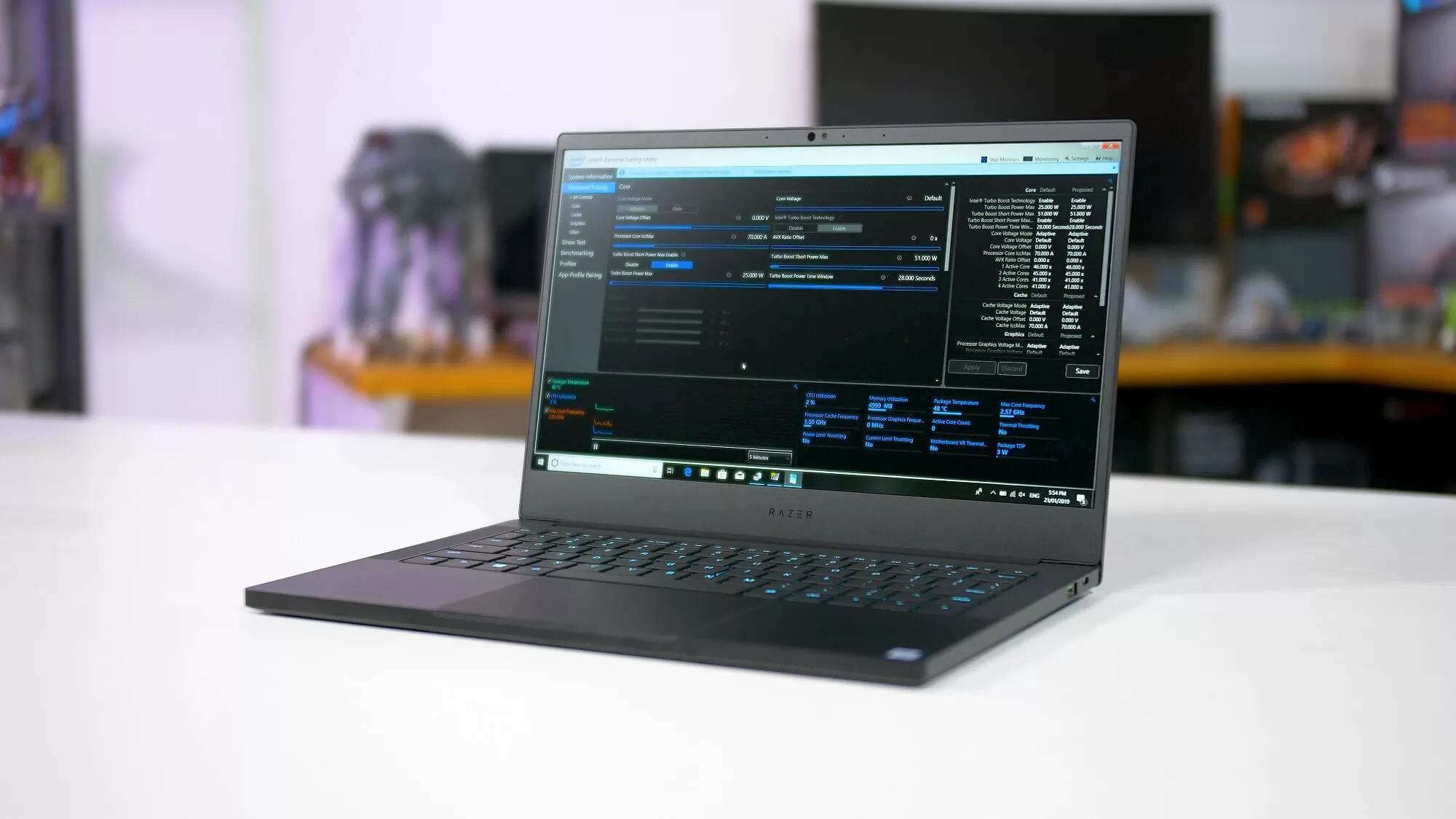
Crucially, we've tested the Cadre i7-8565U using the new Razer Blade Stealth which is an excellent test platform for a number of reasons.
The new Blade Stealth uses the 25W maximum TDP configuration for this CPU, so nosotros'll encounter how this flake performs in devices that choose this configuration and have larger coolers. Dell, for instance, tends to apply 25W for their XPS line. Then, using Intel's Extreme Tuning Utility, we've too been able to set up the CPU down to its regular 15W configuration, this is the most mutual configuration and reflects the bulk of ultraportables that will employ this CPU.
Having both sets of data should give a pretty comprehensive await at how this processor performs.
The Bract Stealth is also a adept platform because it includes 16GB of dual-channel DDR4, once again, a common configuration and dual-aqueduct is key because the best performing laptops have dual-channel retention. On top of this, the laptop also has GeForce MX150 graphics, notwithstanding for the purpose of our testing we've disabled the discrete graphics. Our full review of Razer Bract Stealth is coming upwards presently, where we'll exam the bodily performance of this laptop with its discrete GPU.
A few other things we should mention about Whiskey Lake before the benchmark results... the GPU and cache configuration are unchanged compared to Kaby Lake Refresh. So we're even so looking at UHD 620 graphics at upwardly to 1150 MHz in the Core i7-8565U, forth with 8MB of L3 cache. Typical PL2 power limits also appear to be unchanged, so nosotros're withal looking at curt bursts using upwards to 44W with the 15W configuration, and 51W with the 25W configuration.
Benchmarks
Starting with Cinebench R15, the multi-threaded test is a relatively short benchmark simply it has a decent mix of boost and steady state clock speed beliefs. Despite higher boost clocks, the 8565U in its 15W configuration ends upwardly only 3% faster than the 8550U in the multi-threaded test.
The 25W configuration gets a healthier eleven% boost, which is in line with the boost clock difference. Both configs are a fair bit faster in the single-threaded test though.
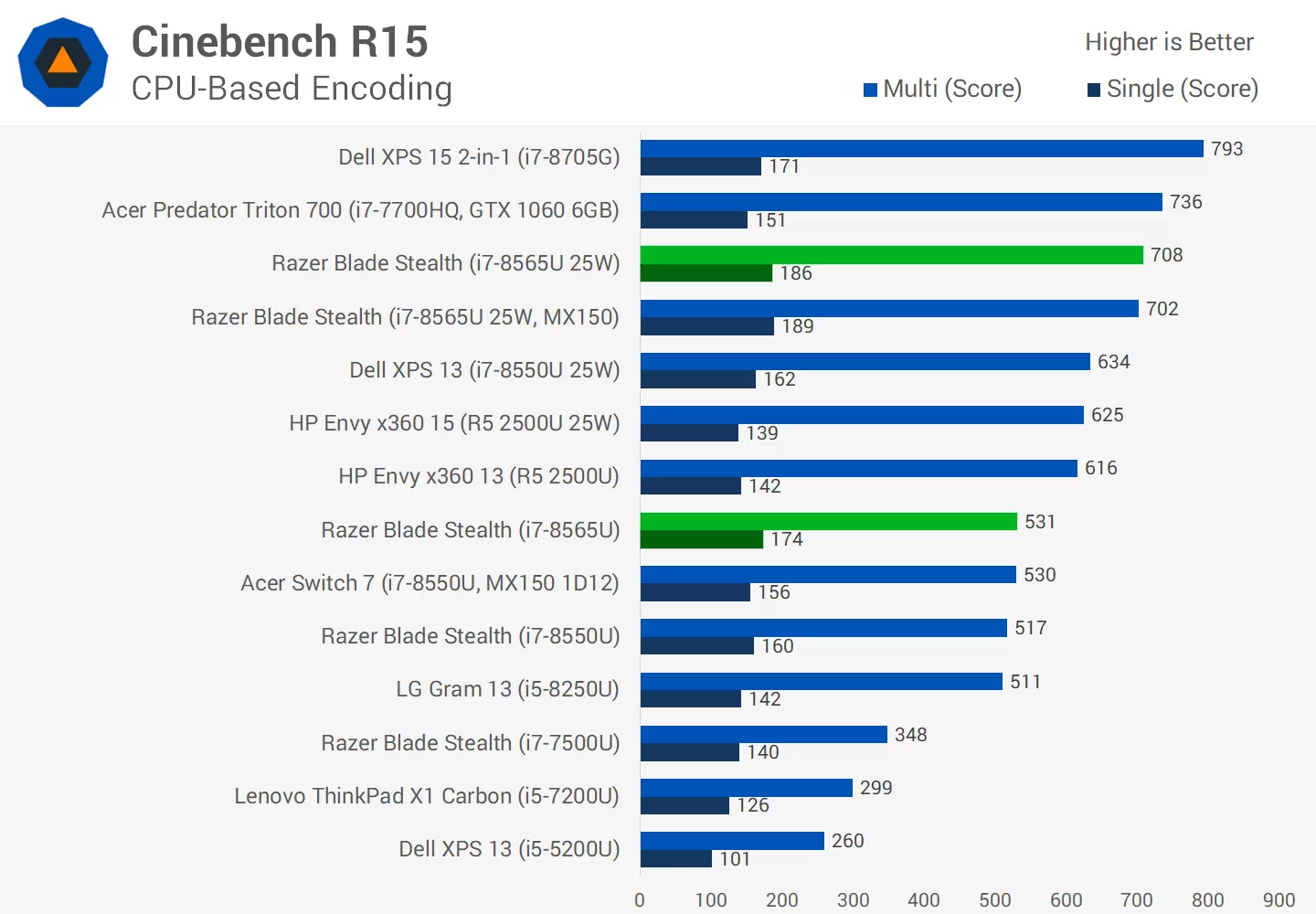
To explain what'due south going on here, it'due south worth looking at a clock speed comparing during the Cinebench run. Both the 15W and 25W configurations start off at their maximum all core Turbo clock speed, which is 3.7 GHz for the 8550U, and iv.1 GHz for the 8565U. All the same when the CPU reverts to its PL1 state, so information technology'due south no longer boosting any more, at that place is quite a departure in behavior.

The 25W 8550U is sitting around the 2.6 to 2.seven GHz mark, nevertheless the 25W 8565U is up at iii.1 GHz, and then that's quite a healthy proceeds for the 8565U and contributes to the larger proceeds in performance. When looking at the 15W CPUs, the 8550U sits at 2.2 to 2.iii GHz compared to 2.3 to 2.4 GHz for the 8565U. There is a gain for the 8565U, but information technology'southward non equally large equally you lot get at 25W.
What's apparent hither is that the reward that 14nm++ brings to Whiskey Lake isn't all that accessible with a tiny 15W power limit. You do become a decent jump in boost clock speeds, but when the CPU reverts to its long term PL1 power country, there'south not a lot to be gained from the 8565U. However at 25W, the taps are opened a bit more and Whiskey Lake can stretch its legs to provide a decent jump in operation.
Looking at the Cinebench R15 functioning chart again, it's also impressive to come across where the 25W configuration is sitting amongst the pack. The 25W 8565U is almost every bit fast as the Core i7-7700HQ in the multi-threaded test, and it smokes it in the unmarried-threaded test. The 7700HQ is a 45W quad-core designed for gaming laptops, so information technology's great to see that operation now bachelor in ultraportable form factors.
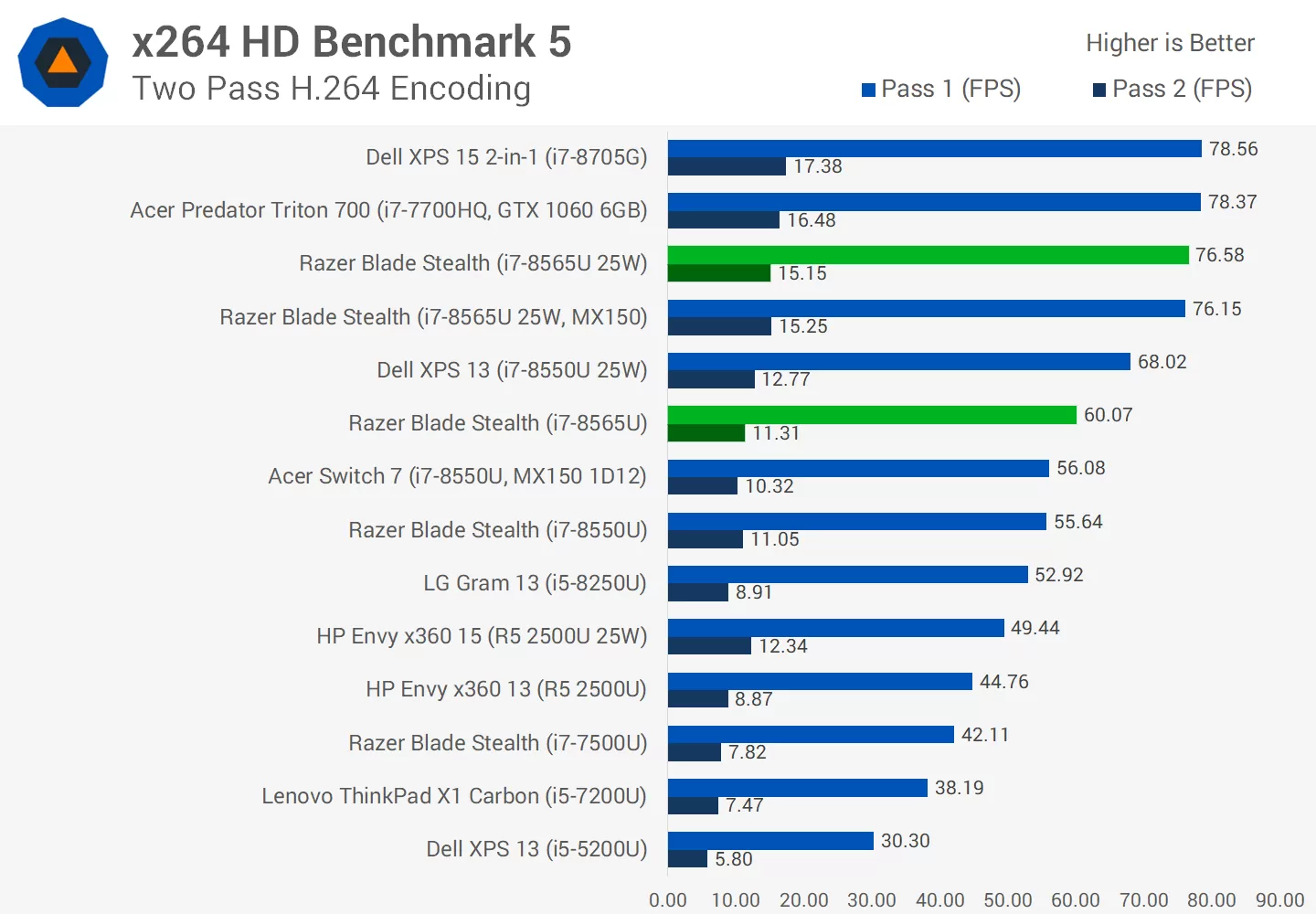
Nosotros meet a similar state of affairs in x264 encoding, the 25W 8565U is right upwardly there with the 7700HQ, while the 15W configuration is providing up to an 8% gain over the 8550U.
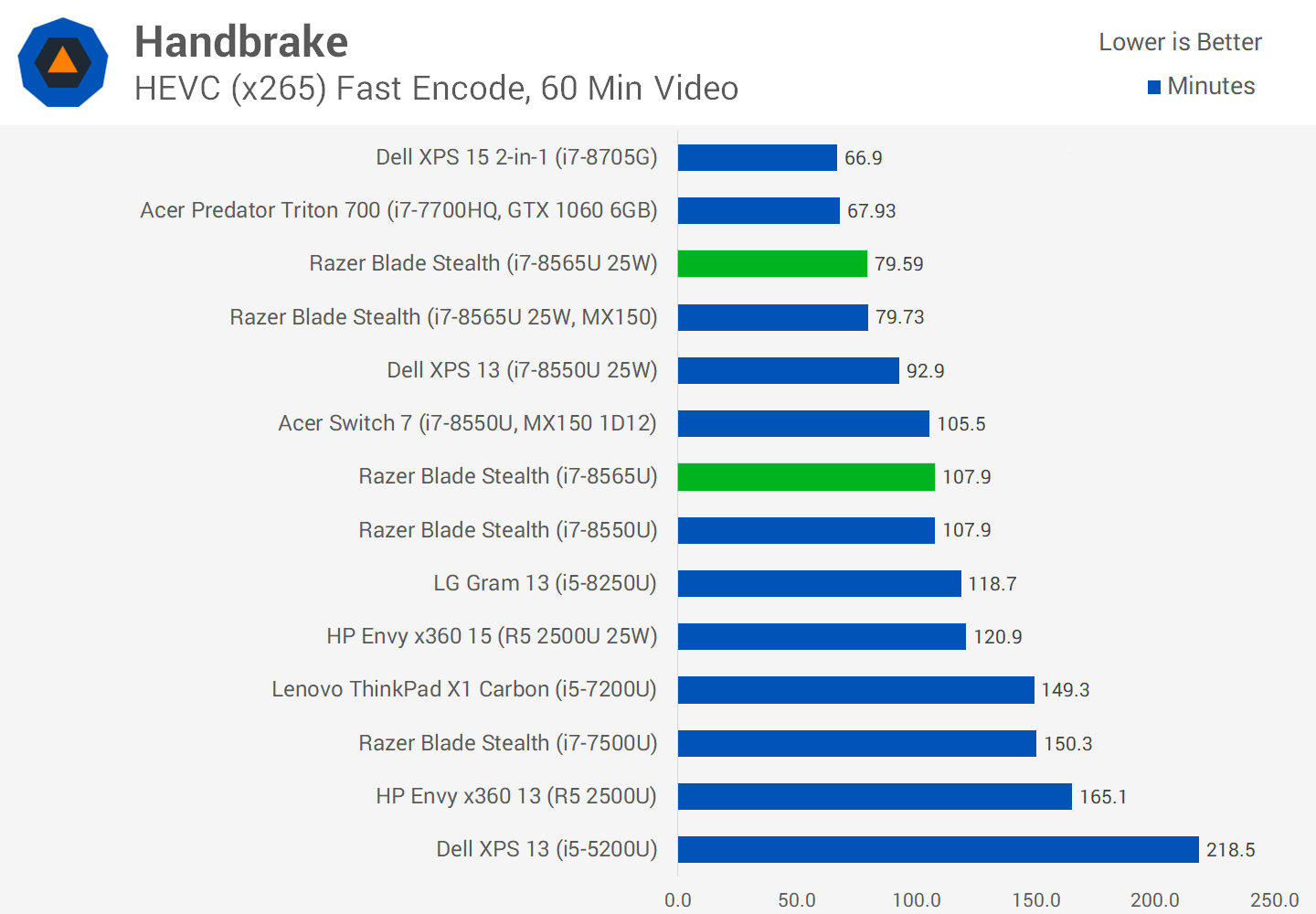
Handbrake x265 was a actually interesting benchmark to run as it shows an fifty-fifty harsher reality for the 15W configuration of these CPUs. With this TDP limit, there was no difference in functioning between the 8550U and 8565U, likely due to the use of AVX instructions that further limit what low-power CPUs tin reach.
Notwithstanding with the 25W configurations, the 8565U is a good 17% faster, which is slightly in a higher place the difference in long term clock speeds. We also encounter that while the 8565U was shut to the 7700HQ in previous tests, when AVX is required, the 7700HQ and other 45W CPUs begin to pull away.

Adobe Premiere benefits strongly from GPU acceleration and the iGPU in these 15W CPUs is pretty weak. You tin can run across that the top three CPUs that are paired with discrete-class graphics smoke the competition hither. We also see the 15W 8565U fall slightly backside the 8550U, a strange result and the only benchmark where this was the case. That said, the 25W configuration is now 14% faster.
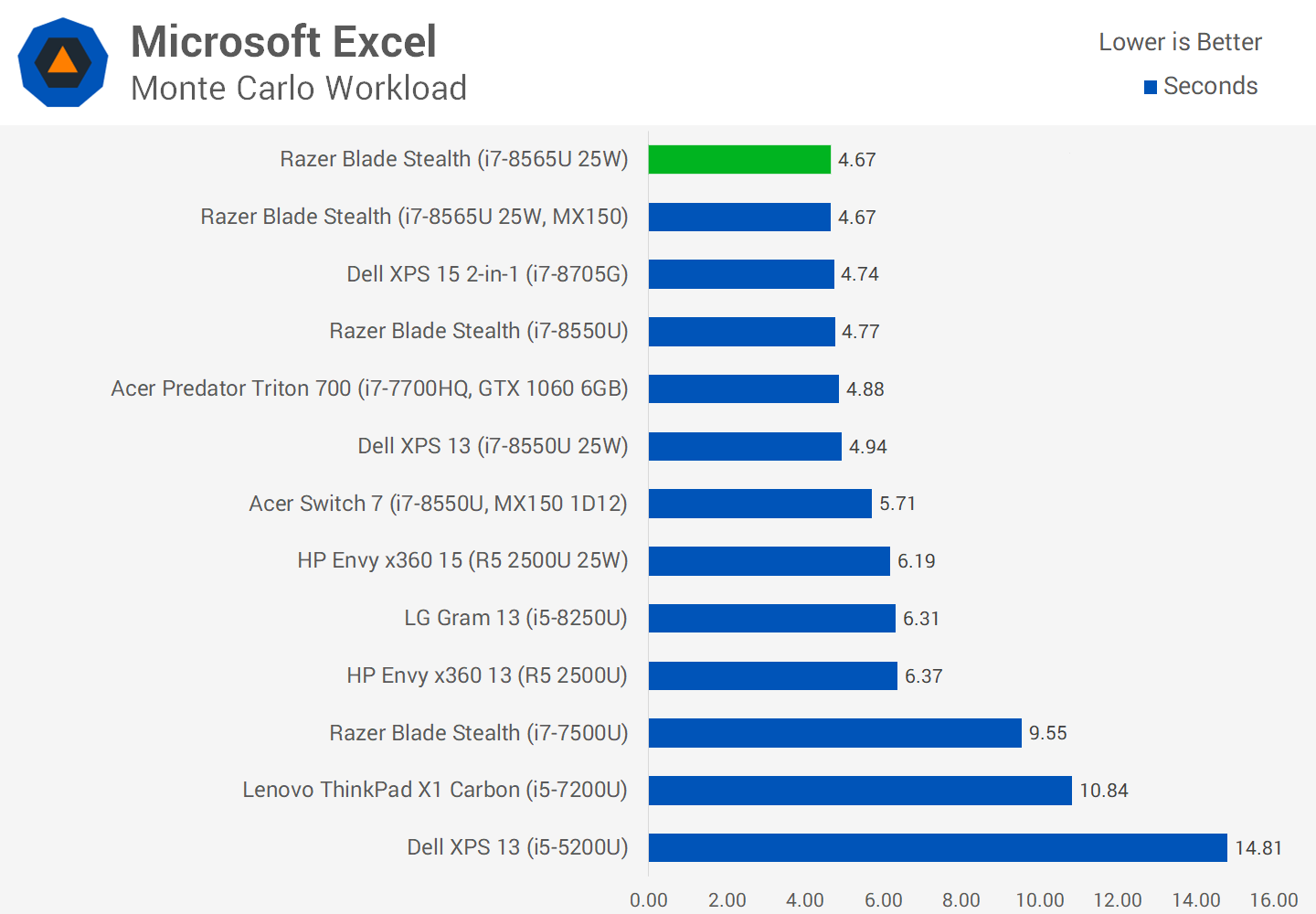
Microsoft Excel is a workload that runs entirely within the PL2 boost country, and then at that place is no difference in performance between the 25W and 15W configurations. The i7-8565U holds a small-scale reward over the 8550U, and both sit around the same mark as the 7700HQ, some other impressive showing.
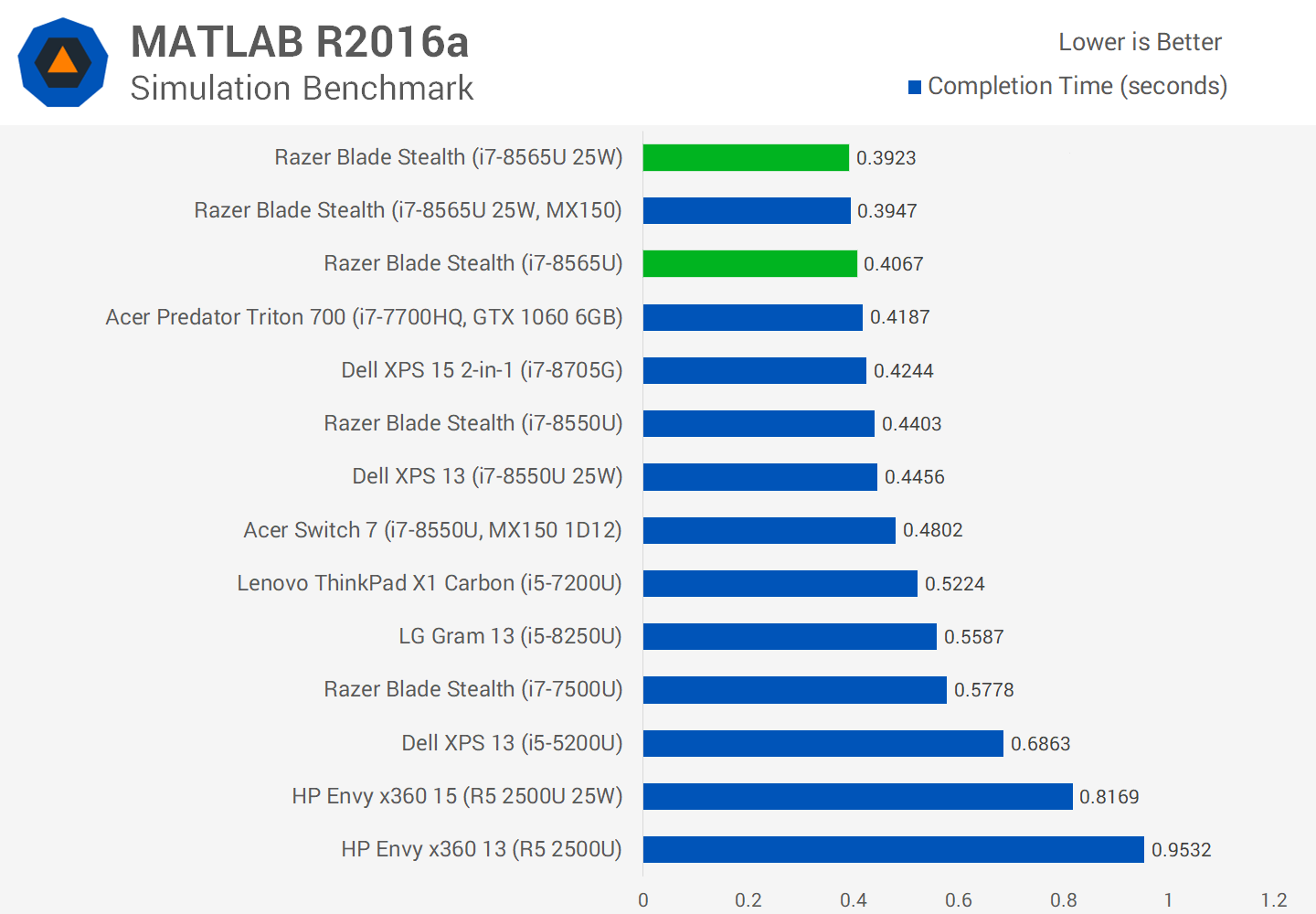
MATLAB is another skillful effect for the 8565U, with an 8% proceeds nowadays with the 15W configuration over the 8550U, while the 25W config jumps that up to a 14% proceeds. Again in this short-flare-up, single-core workload there's non a lot of departure between most of Intel's recent CPUs, and considering information technology likewise thrives on memory bandwidth where there has been almost no improvement, we're left with a big clumping at the top of the chart.

With 7-Zippo nosotros see modest gen-on-gen improvements with Whiskey Lake over again, mostly because this test is curt and runs in the boost clock zone.
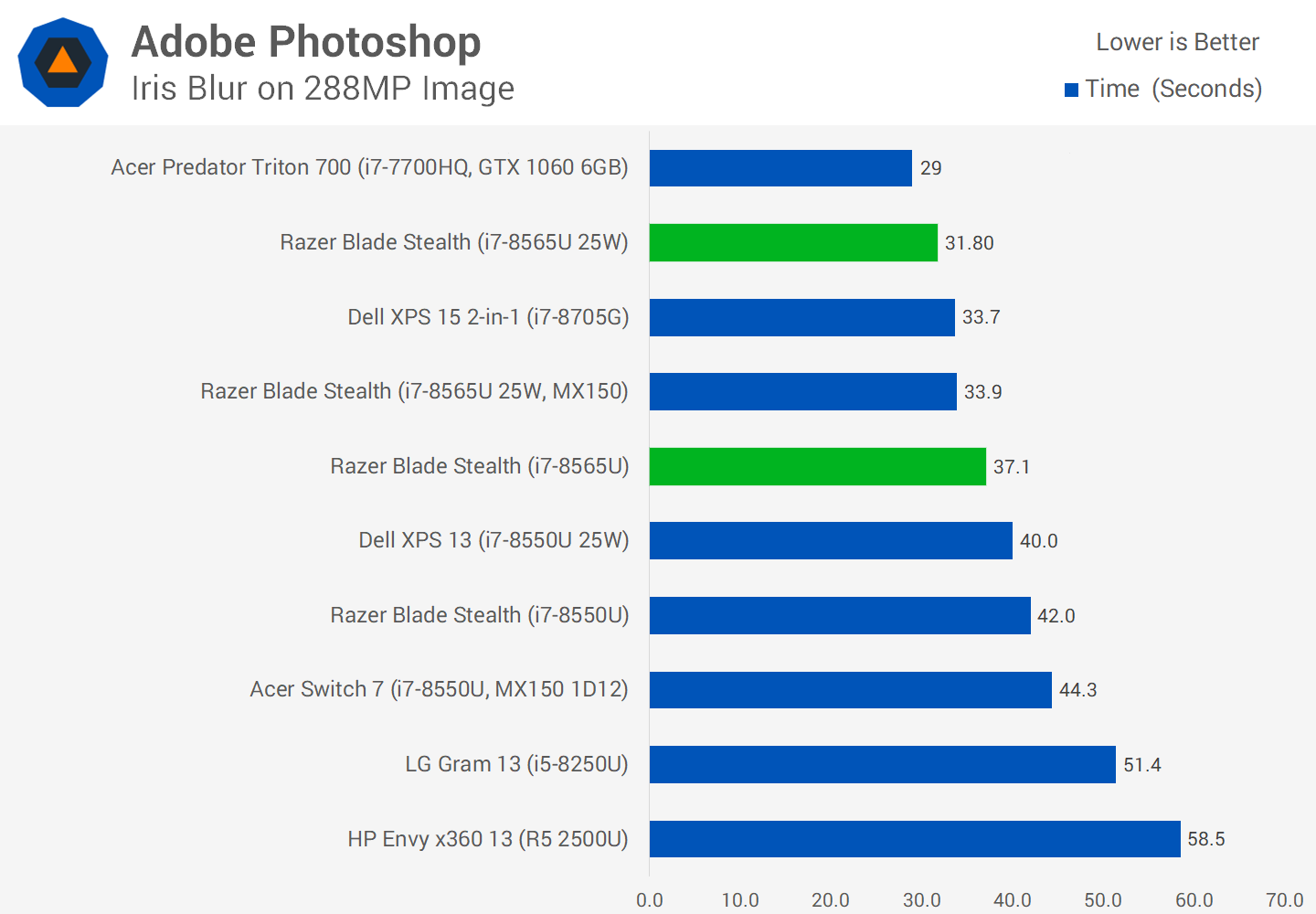
Adobe Photoshop shows some of the largest gains between generations with the 15W SKU delivering xiii% more performance and the 25W SKU showing gains of 26%, much higher than the boilerplate.

Information technology'southward as well worth looking at PCMark 10 where we see decent generational gains between each CPU again. The 15W SKU provides 12% more functioning, which is in line with some of the single-threaded brusk flare-up workloads we've seen, and that'due south largely what PCMark tests.

Briefly touching on GPU performance, in that location'south not a lot to say considering there are no changes to the GPU in Whiskey Lake compared to Kaby Lake Refresh. Big gains are expected for the next generation, but we're not getting anything here.
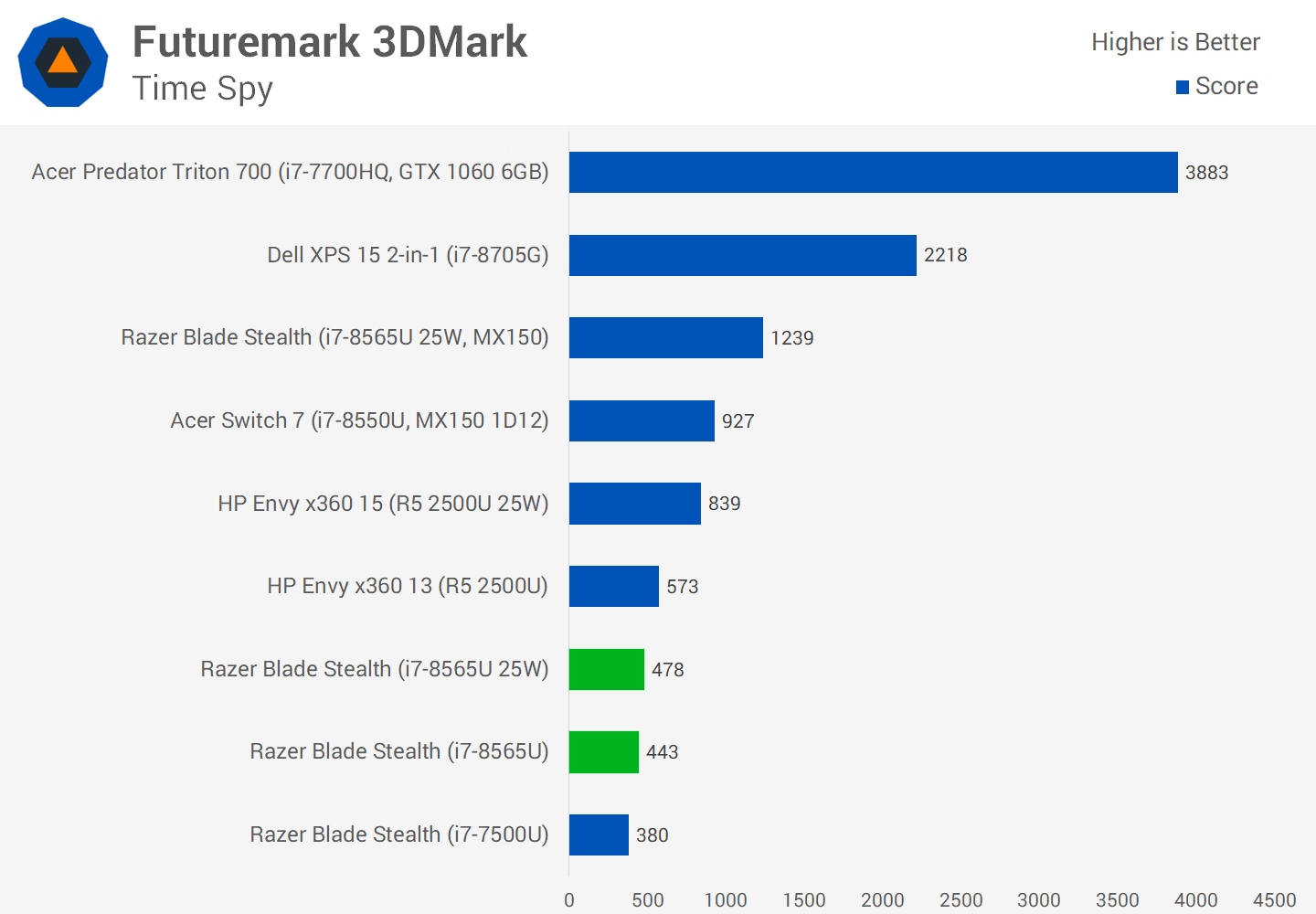
Looking across our 3DMark workloads similar Sky Diver, nigh of the gains you're seeing are from higher CPU scores, while looking at pure GPU scores in that location is side by side to no improvement. In more GPU intensive workloads, Whiskey Lake still gets handily beaten by AMD'southward Ryzen Mobile processors.
Let's now look through some overall summaries of how the Core i7-8565U performs...
On boilerplate, the 15W configuration of the 8565U is 8% faster than the 8550U, though these gains largely appear in either single-threaded workloads, short workloads, or some combination of the two. In longer workloads like encoding, you can expect less than a 5% performance comeback.

When comparing 25W configurations, the gains are more pregnant. Here we're upwardly to a 15% improvement on average with quite a salubrious gain in longer workloads. This is more in line with the clock speed differences betwixt the two processors; the 8565U is only clocked higher so y'all can look it to perform amend, especially with a college power limit.
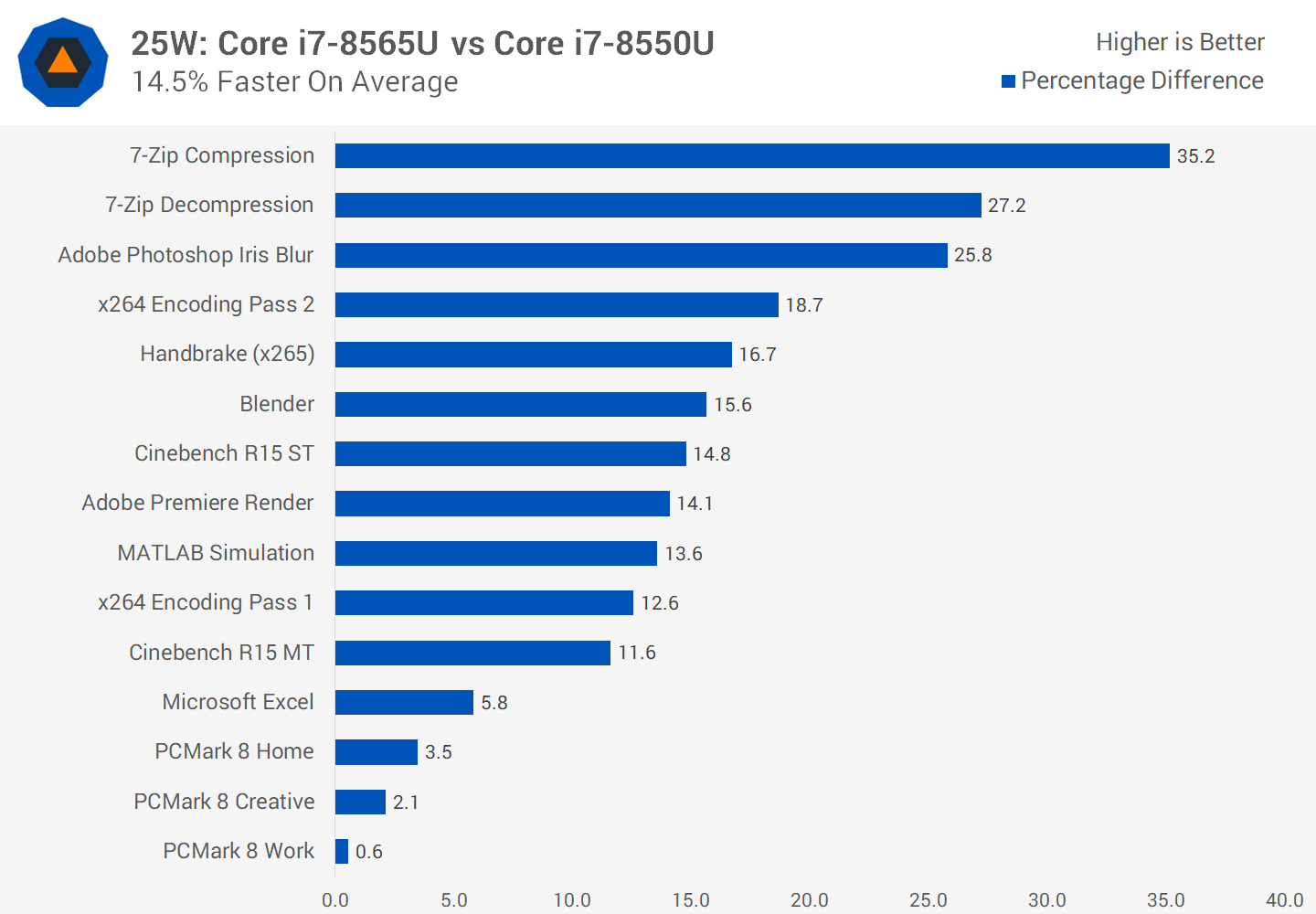
The 25W Core i7-8565U is besides now delivering performance in line with the 45W Core i7-7700HQ in some workloads; the 8565U is less than ane per centum backside on average. This means that in the space of roughly two years, Intel has been able to accept gaming laptop level CPU performance and put that into ultraportable-type chassis. Sure, you need to use the upper-end 25W configuration to achieve this, only it'due south impressive nonetheless.
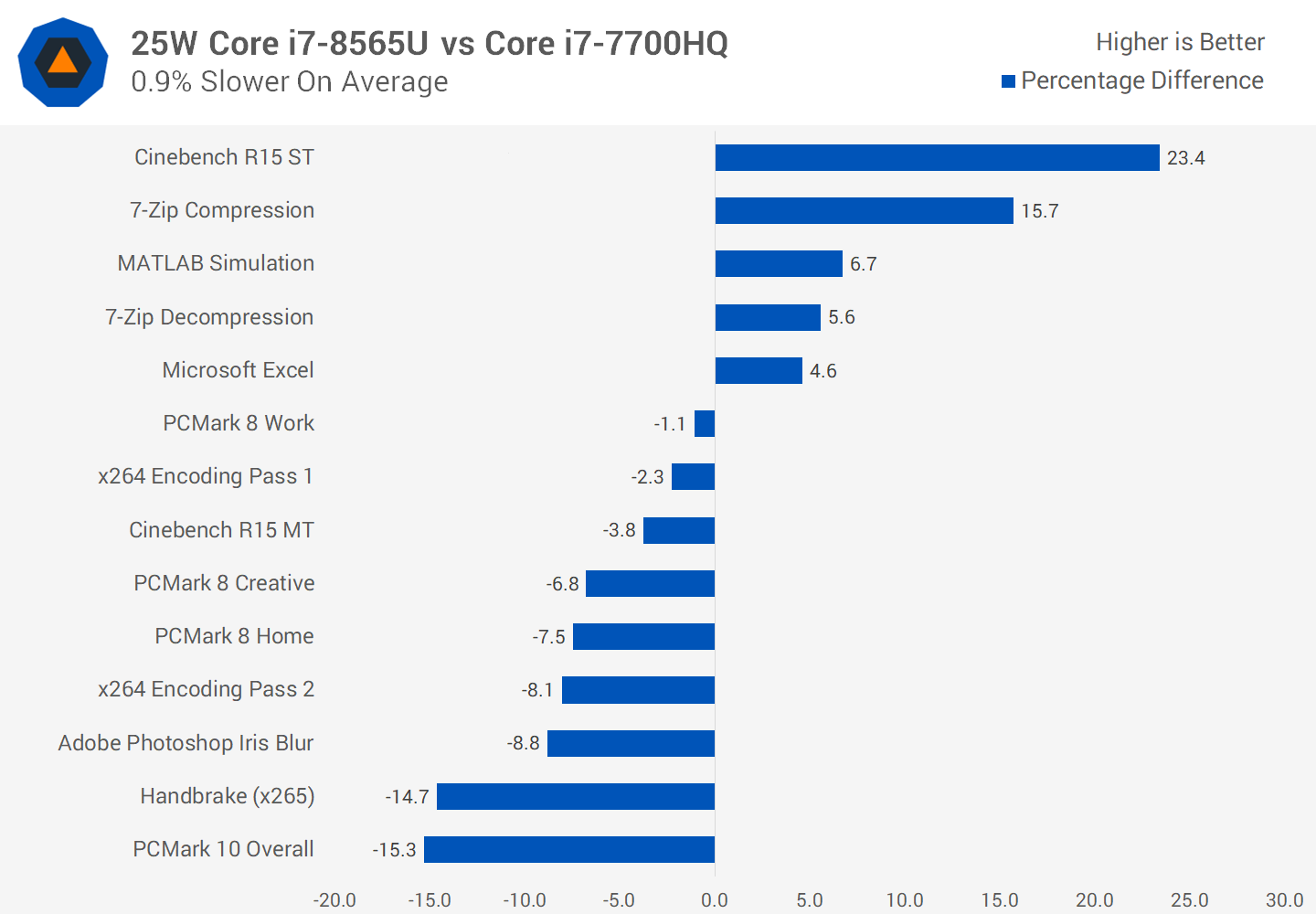
And finally comparing the 15W 8565U to even but the Cadre i7-7500U from a few years agone. It's a no-contest. With double the core and thread count, the 8565U is on average 35% faster and that margin only increases when looking strictly at multi-core workloads. If you're coming from a dual-core ultraportable to a quad-cadre Whiskey Lake system, expect to come across significant performance improvements across all workloads, either from the doubling of cores or from large clock speed gains.
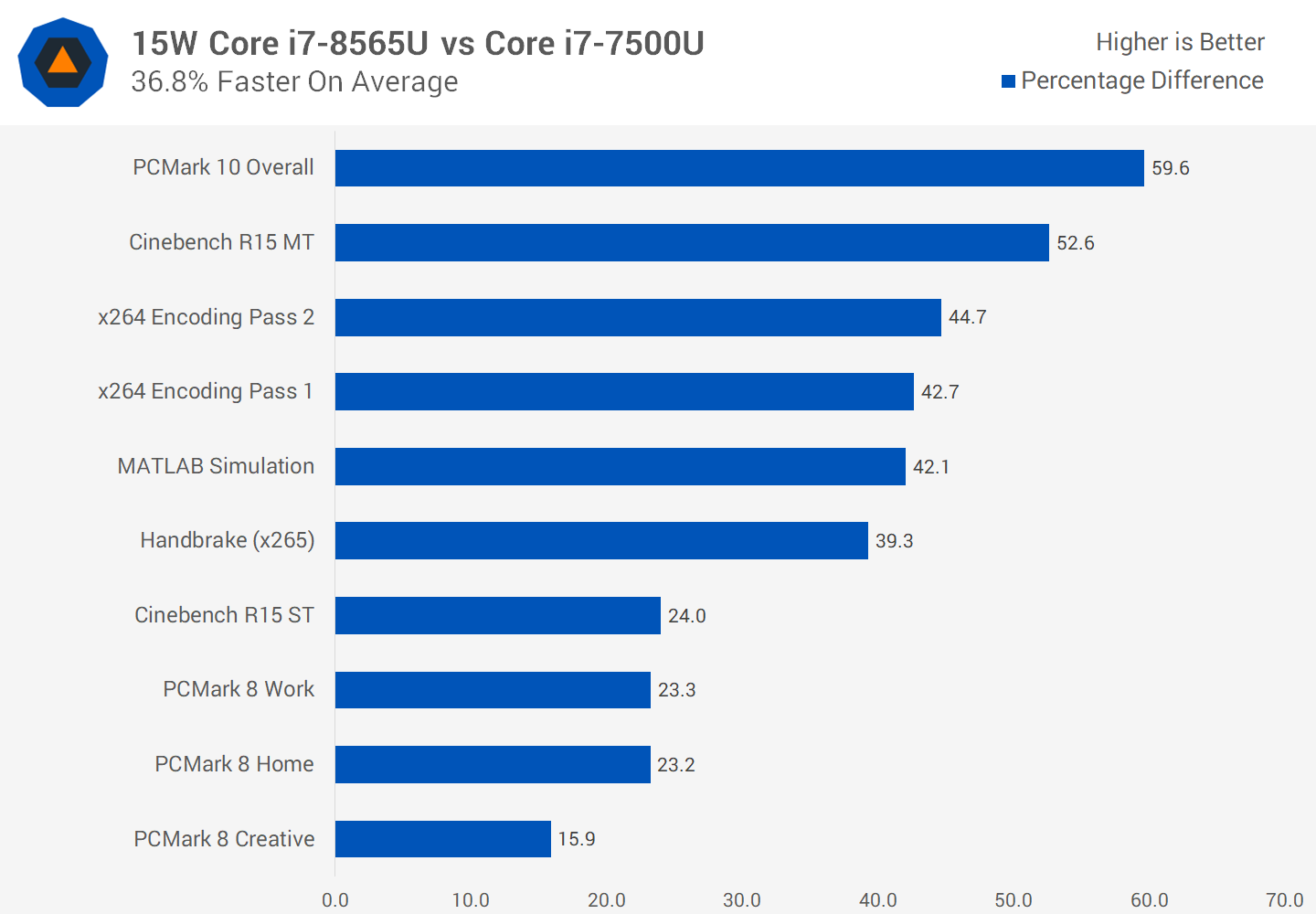
Wrap Upwards
In that location are a couple of ways to look at what Whiskey Lake brings to the table. On ane paw, there'due south not a lot to exist gained in its 15W configuration. We're looking at mostly unmarried-digit improvements and sometimes for longer workloads, no improvements compared to Kaby Lake Refresh. Intel'due south 14nm node is clearly limiting and the shift to 14nm++ can only exercise so much.
The best you lot'll become from Whiskey Lake is in its 25W configuration where performance improvements tend to friction match the clock speed gains more closely at around a fifteen% improvement. All the same information technology'south rare to find a 25W organization. The 15W config is much more than common, and so for the majority of buyers looking at a Whiskey Lake system, at that place'south not a lot of incentive to upgrade from Kaby Lake Refresh or to purchase a Whiskey Lake system if it costs more than a last-gen Kaby Lake-R automobile.

However information technology's difficult not to be impressed with what Intel has achieved over the last few years without significant advances to process technology. Certain, on the desktop 14nm+++ is now a chip of a joke and functioning gains – outside of increased core counts – are anywhere from unimpressive to non-existent.
But on the mobile side, within the same sorts of ultraportable laptop designs nosotros've gone from ii cores at modest clock speeds, to iv cores at reasonably high clock speeds, on largely the same process node and architecture. Operation that used to be restricted to gaming laptops is now accessible in more portable grade factors, which is very impressive.
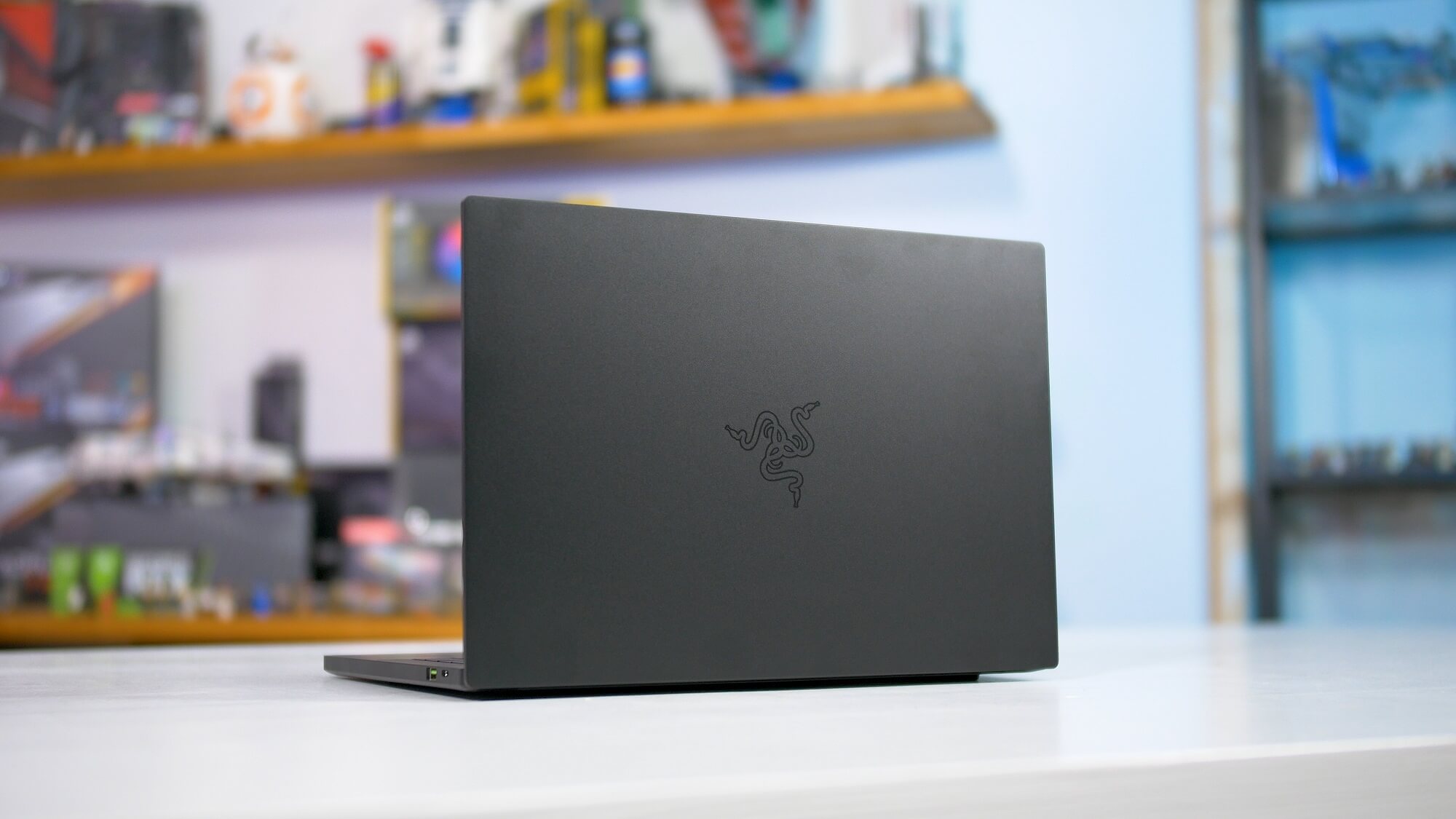
And while Whiskey Lake isn't a huge pace over Kaby Lake Refresh, it will be a massive improvement to anyone upgrading from a 7th-gen organisation or before. Typical laptop upgrade cycles are quite long. If you're using a four yr former laptop for example, yous can expect huge improvements upgrading to something 8th-gen. That said, I'd nevertheless shop effectually considering you don't necessarily need Whiskey Lake to access those gains, Kaby Lake-R is also fine.
At that place is still 1 lingering issue with Intel'southward mobile processors, and that'south the GPU side. With basically goose egg improvement in this department for generations at present, Intel is lagging way backside what is required for a modernistic ultraportable. AMD realized this as their beefy Vega GPU in their Ryzen Mobile APUs handily beat Intel's integrated graphics. Lots of OEMs have also realized, and are starting to pair Nvidia's MX150 discrete GPU with Intel'southward 15W CPUs to get that extra GPU operation.
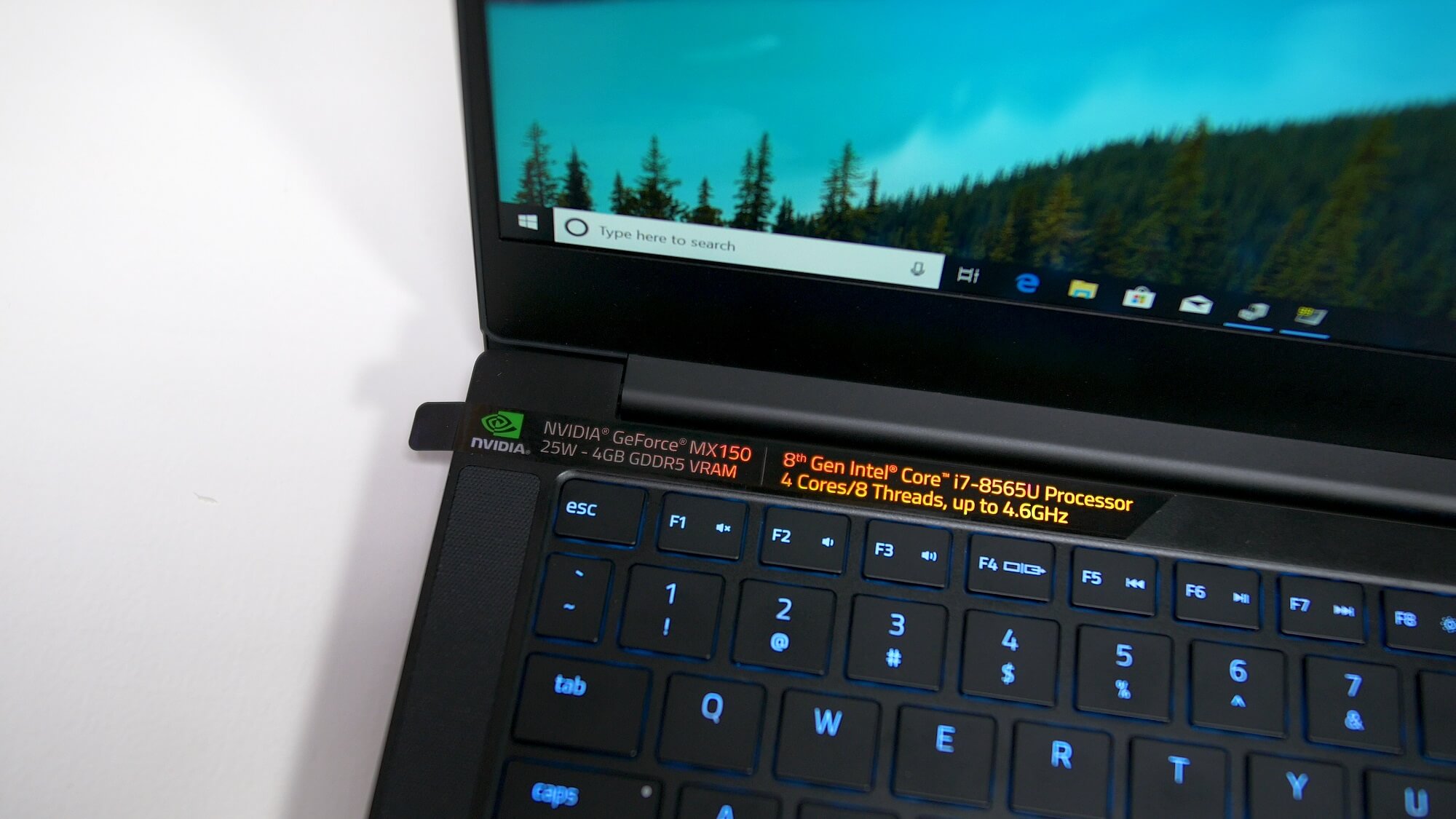
It does seem similar Whiskey Lake is a bit of a cease gap until Intel can get their 10nm CPUs out the door at the end of 2019, which will bring a much larger and competitive Gen11 integrated GPU.
With only 5 to 15% performance gains on the CPU side, it's all Intel could practice at this point. OEMs are not exactly rushing out Whiskey Lake systems and we believe the small gains are a reflection of that.
Shopping Shortcuts:
- Razer Blade Stealth on Razer.com, Amazon
- More Core i7-8565U equipped laptops on Amazon
Source: https://www.techspot.com/review/1782-intel-whiskey-lake-core-i7/
Posted by: corsoncludeatic.blogspot.com


0 Response to "Testing Intel Whiskey Lake CPUs: Core i7-8565U Review"
Post a Comment